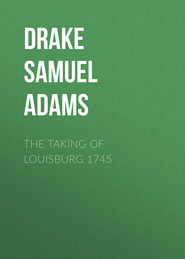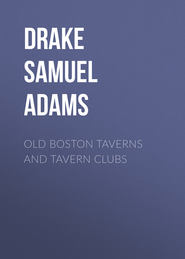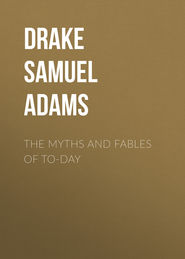По всем вопросам обращайтесь на: info@litportal.ru
(©) 2003-2024.
✖
Nooks and Corners of the New England Coast
Настройки чтения
Размер шрифта
Высота строк
Поля
57
While making his geological survey of Maine.
58
Williamson mentions the heaps on the eastern bank, not so high as on the western, extending back twenty rods from the river, and rendering the land useless. The shell heaps of Georgia and Florida are more extensive than any in New England.
59
Monhegan lies nine miles south of the George's group, twelve south-east from Pemaquid, and nine west of Metinic. It contains upward of one thousand acres of land. According to Williamson, it had, in 1832, about one hundred inhabitants, twelve or fourteen dwellings, and a school-house. The able-bodied men were engaged in the Bank fishery; the elders and boys in tending the flocks and tilling the soil. At that time there was not an officer of any kind upon the island; not even a justice of the peace. The people governed themselves according to local usage, and were strangers to taxation. A light-house was built on the island in 1824.
60
A good many arguments may be found in the "Collections of the Maine Historical Society" as to whether Weymouth ascended the Penobscot or the Kennebec. All assume Monhegan to have been the first island seen. This being conceded, the landmarks given in the text follow, without reasonable ground for controversy.
61
In 1607 Weymouth was granted a pension of three shillings and fourpence per diem. Smith was at Monhegan in 1614, Captain Dermer in 1619, and some mutineers from Rocroft's ship had passed the winter of 1618-'19 there. The existence of a small plantation is ascertained in 1622. In 1626 the island was sold to Giles Elbridge and Robert Aldworth for fifty pounds.
62
This flag inspired the national lyric, "The Star-spangled Banner."
63
Colonel Storer kept up the stockades and one or more of the flankarts until after the year 1760, as a memorial rather than a defense.
64
This relationship is disputed by Mr. Joseph L. Chester, the eminent antiquary. Winthrop, it would seem, ought to have known; Eliot and Allen repeat the authority, the latter giving the full name of Mary Hutchinson.
65
Both sides have been ably presented by Dr. N. Bouton and Hon. Charles H. Bell.
66
Once, and much better, Arundel, from the Earl of Arundel.
67
An old sea-chart says, "Saco River bear place at low water."
68
"Massachusetts Historical Collections," 1792, vol. i.
69
An Irishman, Darby Field by name.
70
Purchas, vol. iv., 1647.
71
In England there is a cockle called the purple, from the coloring matter it contains, believed to be one of the sources from which the celebrated Tyrian dye was obtained. The discovery is attributed in mythical story to a dog. The Tyrian Hercules was one day walking with his sweetheart by the shore, followed by her lap-dog, when the animal seized a shell just cast upon the beach. Its lips were stained with the beautiful purple flowing from the shell, and its mistress, charmed with the color, demanded a dress dyed with it of her lover.
72
Situated on Stage Neck, a rocky peninsula connected with the main shore by a narrow isthmus, on which is a beach. There was formerly a fort on the north-east point of the Neck.
73
Sir F. Gorges's own relation.
74
About 1647 the settlements at Agamenticus were made a town by the name of York, probably from English York.
75
Confederation of the colonies for mutual protection.
76
Elizabeth died while Martin Pring was preparing to sail for America; and Essex and Raleigh both went to the block.
77
The insertion of the lengthy title in full appears unnecessary.
78
The celebrated commentator.
79
We are warranted in the belief that the first services held in this plantation were those of the Church of England. The first, or borough, charter mentions the church chapel. Robert Gorges, in 1623, brought over an Episcopal chaplain, William Morrell, and with him also came, as is supposed, Rev. William Blackstone, the first inhabitant of Boston.
80
Hutchinson says: "In every frontier settlement there were more or less garrison houses, some with a flankart at two opposite angles, others at each corner of the house; some houses surrounded with palisadoes; others, which were smaller, built with square timber, one piece laid horizontally upon another, and loop-holes at every side of the house; and besides these, generally in any more considerable plantation there was one garrison house capable of containing soldiers sent for the defense of the plantation, and the families near, whose houses were not so fortified. It was thought justifiable and necessary, whatever the general rule of law might be, to erect such forts, castles, or bulwarks as these upon a man's own ground, without commission or special license therefor." – "History of Massachusetts," vol. ii., p. 67.
81
The name of Kittery Point is from a little hamlet in England. It is the first and oldest town in the State, having been settled in 1623. Gorgeana, settled 1324, was a city corporate, and not a town. Kittery first included North and South Berwick and Eliot.











